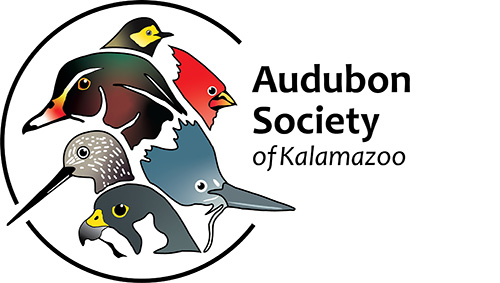Highly pathogenic avian influenza (HPAI) cases have been confirmed in domestic birds, wild birds, and wild mammals throughout most of North America, including Michigan. The H1N5 strain of avian influenza virus is defined as highly pathogenic due to 100% mortality for domestic poultry. Since late February 2022, Michigan has experienced die-offs in wild birds and mammals across the state due to HPAI. In particular, waterfowl, raptors, scavengers, gulls, and terns have been affected. The DNR is focusing its surveillance efforts by prioritizing testing dead birds from die-offs of six or more birds, as well as Bald Eagles, and abnormal acting hawks, owls, and wild mammals. The Michigan Department of Agriculture and Rural Development (MDARD) takes swift action in response to this disease and is closely monitoring and responding to reports of sick domestic birds and HPAI throughout the state.
Peregrine Falcon numbers are in decline in many locations across the US, as noted by numerous state programs and nest monitors. New Jersey has a robust monitoring program and most peregrines in the state are banded. In 2024, half of the nesting peregrines in New Jersey were missing. Virginia, Alaska, coastal Washington, and California have reported similar findings. Because Peregrine Falcons have very strong site fidelity, they will not abandon their territory if they are alive. There is little doubt that these missing birds are dead. HPAI is fatal for many species, including poultry, waterfowl, and raptors, such as Peregrine Falcons. Because peregrines prey on other birds, including waterfowl, they are easily exposed to birds that are infected with HPAI. However, testing, and positive results for HPAI, are most likely lower than actual figures because sick or dead Peregrines are usually not accessible for testing. (Gallagher, Audubon Magazine, September 17, 2024). (https://www.audubon.org/magazine/why-are-peregrine-falcon-numbers-falling-united-states-again).
High mortality from HPAI in Peregrine Falcons most likely parallels that of Bald Eagles. In a recent report from Discover the UP (https://www.youtube.com/watch?v=PHaGntikoHg; 20Jan2025) and Dr. William Bowerman (University of Maryland) with the Michigan Bald Eagle Project, there has been a 40% decline in breeding pairs of Bald Eagles in Michigan. In 2024, the Michigan DNR necropsied 222 eagles. Based on typical recovery data, 222 eagles represent an estimated 2,300 eagles that died in Michigan in 2024. Forty-two percent of necropsied eagles died from infectious diseases in 2024 (compared to an average of 7% from 1986-2017). Of those that died from infectious disease, 90% died from HPAI. Michigan has the best Bald Eagle survey data in the world, and only because of this robust monitoring effort was the decline in the population found and documented. It is estimated that it will take three decades to recover this degree of loss.
Peregrine Falcons have been taken off the Michigan endangered species list, although they are still considered to be a threatened species. Due to the change in status, the Michigan DNR no longer plans to band and monitor Peregrine Falcons. It is only due to consistent and robust monitoring that changes in wildlife populations can be found and understood. We are likely on the verge of serious declines in the Peregrine Falcon population that cannot be documented or interpreted without continued monitoring and banding efforts, and I hope that the DNR reconsiders their decision to discontinue peregrine banding.
Feeding wild birds, especially waterfowl, at parks should be avoided because this congregates birds and increases the spread of diseases, including HPAI. Although there is no official recommendation to not feed songbirds, congregation of these species also promotes disease transmission. If you are feeding birds, feeders and birdbaths should be cleaned every week or so with a solution of 10% bleach. There are pros and even more cons to feeding birds (but that is subject of another article), but once the snow has melted and the ground is open, I would encourage you to stop feeding for the season. Birds with HPAI may have sudden death, neurological signs, such as abnormal head position, difficulty walking or flying, seizures, circling, nasal discharge, diarrhea, sneezing, etc.
You should not directly handle sick or dead birds without taking precautions for your own health. HPAI is spread through fecal droppings, nasal discharge, saliva, and mucus, and there is potential for human transmission although that is considered a relatively low risk. The disease will easily spread to various mammalian species, especially felines. If you notice the death of six or more wild birds, file a report by:
- Using the DNR’s Eyes in the Field reporting form
- Call the DNR Wildlife Disease Laboratory at 517-336-5030
If you suspect avian influenza in domestic birds, contact MDARD at 800-292-3939.
If dead birds are found in an area where it is difficult to get to them or where people and domestic animals will not have contact with them, it is best to leave them alone and not handle them. If they are in an area where you can easily get to them and they will be a potential risk to people and domestic animals, the birds can be double bagged and disposed of through your trash pickup. At a bare minimum, wear rubber boots that can be disinfected and disposable or rubber gloves. A respirator and eye protection are recommended to protect your nose, mouth, and eyes from accidental splashes that may contain the virus. If handling numerous birds, wear a waterproof apron over clothing. Disinfect the outer layers and wash clothes immediately afterwards. If you have cats, avoid bringing any contaminated clothing inside.
Look for another articl
